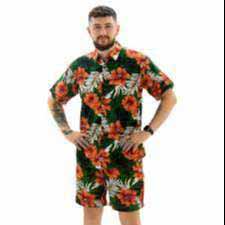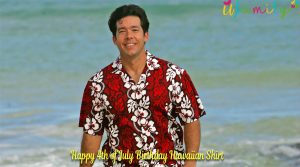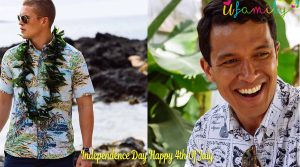
Are Hawaiian Shirts Business Casual
Introduction
Are Hawaiian Shirts Business Casual ?
Business casual attire has become a staple in many workplaces, but what constitutes as appropriate clothing can vary depending on the company and industry. One item of clothing that has sparked debate in recent years is the hawaiian t shirts. Once reserved for vacationers and beach-goers, Hawaiian shirts have seen a resurgence in popular culture and have even made appearances in the office. But are they appropriate for a business casual setting? In this article, we will explore the history of Hawaiian shirts, their appropriateness in the workplace, and tips for wearing them in a professional setting.

The History of Hawaiian Shirts
Hawaiian shirts, also known as aloha shirts, have a rich history that dates back to the 1930s.
Origin and evolution of the Hawaiian shirt
The Hawaiian shirt was first introduced by Chinese and Japanese immigrants who moved to Hawaii in the late 19th and early 20th centuries. These immigrants brought with them a tradition of hand-painted fabrics, which they used to create brightly colored shirts. Initially, these shirts were only worn by locals and tourists on the islands, but they quickly gained popularity among mainland Americans.
In the 1930s, a Hawaiian businessman named Ellery Chun began mass-producing the shirts and selling them in his store in Waikiki. He coined the term “Aloha shirt” and began marketing them as a symbol of Hawaiian culture. The shirts quickly gained popularity among tourists, and by the 1940s, they were being worn by celebrities and politicians visiting the islands.
How Hawaiian shirts became a fashion staple
In the 1950s and 1960s, Hawaiian shirts experienced a cultural resurgence. The shirts were worn by celebrities such as Elvis Presley and Frank Sinatra, and they became a symbol of the laid-back, carefree attitude of the era. The shirts continued to gain popularity in the 1970s and 1980s, and by the 1990s, they had become a fashion staple.
Hawaiian Shirts in the Workplace
With the rise of Hawaiian shirts in popular culture, it’s not surprising that they have made appearances in the workplace. But are they appropriate for a business casual setting?
Pros and cons of wearing Hawaiian shirts in a business setting
On the pro side, Hawaiian shirts can add a bit of personality and individuality to an otherwise conservative wardrobe. They can also be a conversation starter and can help break the ice in a professional setting.
On the con side, Hawaiian shirts can be seen as too casual or unprofessional. They may also be associated with a laid-back, vacation mindset, which can be at odds with the seriousness of a business setting.
Factors to consider when deciding to wear a Hawaiian shirt to work
When deciding whether or not to wear a Hawaiian shirt to work, there are a few factors to consider.
- The culture of your company: Some companies have a more relaxed dress code, and Hawaiian shirts may be seen as appropriate. Others have a more conservative dress code and may view Hawaiian shirts as too casual.
- The industry you work in: Hawaiian shirts may be more appropriate in certain industries, such as the tech industry or advertising, where a more relaxed dress code is common. They may be less appropriate in industries such as finance or law, where a more formal dress code is the norm.
- The occasion: Hawaiian shirts may be more appropriate for casual Friday or a company event, such as a summer picnic, than for a meeting with clients or a presentation.
Examples of companies and industries where Hawaiian shirts may be appropriate
- Tech companies: Many tech companies have a relaxed dress code, and Hawaiian shirts may be seen as appropriate.
- Advertising and creative industries: Companies in the advertising and creative industries often have a more relaxed dress code, and Hawaiian shirts may be seen as a way to stand out and showcase a unique sense of style.
- Hospitality industry: Hawaiian shirts may be seen as appropriate in the hospitality industry, particularly in positions that involve interacting with tourists or working in a tropical setting.

How to Wear a Hawaiian Shirt in a Business Casual Setting
If you decide to wear a Hawaiian shirt to work, there are a few tips to keep in mind to ensure that it is worn in a professional manner.
Tips for pairing Hawaiian shirts with other clothing items
- Pair your Hawaiian shirt with neutral-colored pants or khakis. Avoid pairing it with shorts or beachwear.
- Layer your Hawaiian shirt over a solid-colored, collared shirt. This will add a level of professionalism to the shirt and make it more appropriate for a business casual setting.
- Choose a Hawaiian shirt with a more subdued pattern or color scheme. Bright, flashy patterns may be too casual for a business setting.
Guidelines for accessorizing with Hawaiian shirts
- Keep accessories simple and minimal. A watch and a pair of dress shoes are all you need.
- Avoid wearing beach-themed accessories, such as flip-flops or beach hats.
- Opt for a more subdued belt or leather belt
Do’s and don’ts for wearing Hawaiian shirts in a professional setting
- Do make sure your Hawaiian shirt is clean and well-maintained. Wrinkled or stained shirts may be seen as unprofessional.
- Do consider the occasion and the people you will be interacting with. Hawaiian shirts may be more appropriate for a casual Friday or a company event than for a meeting with clients or a presentation.
- Don’t wear Hawaiian shirts with shorts or beachwear. This can make the shirt appear too casual.
- Don’t wear Hawaiian shirts with bright, flashy patterns or loud colors. This can make the shirt appear too casual.
Conclusion
In conclusion, whether or not Hawaiian shirts are appropriate for a business casual setting depends on the culture of your company, the industry you work in, and the occasion. While they can add a bit of personality and individuality to an otherwise conservative wardrobe, they should be worn in a professional manner and paired with appropriate clothing items. If you are unsure about whether or not to wear a Hawaiian shirt to work, it’s best to err on the side of caution and choose something more conservative. Ultimately, it’s up to each individual to decide whether or not to incorporate Hawaiian shirts into their professional wardrobe.





